Mosses, Liverworts, and Lichens
Media
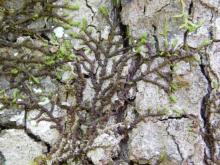
Species Types
Scientific Name
Frullania eboracensis
Description
New York scalewort is the most common and easily recognized leafy or scaly liverwort. It forms tiny, delicate traceries on tree bark and is usually rusty or purplish red or green.
Media
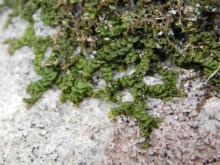
Species Types
Scientific Name
Porella spp.
Description
Porella liverworts are fairly common in Missouri, but few people recognize them when they see one. These scaleworts are some of our many species of leafy liverworts — small, mosslike plants that form traceries on rocks or trees.
Media
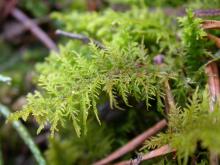
Species Types
Scientific Name
Thuidium spp.
Description
Easy to identify, fern mosses look like tiny ferns. Just like many fern fronds, the branches lie on one plane and become shorter toward the tips. They even lean over like fern fronds.
Media
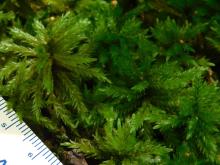
Species Types
Scientific Name
Climacium americanum and Climacium kindbergii
Description
Tree mosses in genus Climacium look like miniature trees, complete with tiny upright trunks and long, slender branches clustered at the top. They form dense, thick mats in moist, shady places.
Media
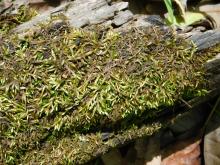
Species Types
Scientific Name
Entodon seductrix
Description
Glossy moss, or shiny or seductive endoton, is a common Missouri moss with broad, glossy leaves that are pressed tightly against the stems. It forms large, dense mats that sometimes cover an entire boulder or log.
Media
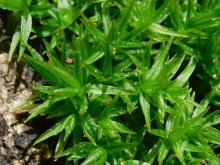
Species Types
Scientific Name
Atrichum spp.
Description
Missouri has five species of starburst mosses (genus Atrichum). They tend to look different depending on whether they are wet or dry. When wet, they look like mass of bright green stars, but when dry, the leaves shrivel, contort, and look dead.
Media
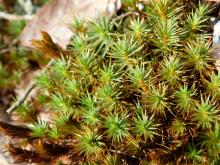
Species Types
Scientific Name
Polytrichum juniperinum
Description
Juniper haircap moss is common and easy to recognize, since it looks like a tiny forest of juniper sprigs. It’s called a haircap moss because the young capsules have densely hairy caps.
Media
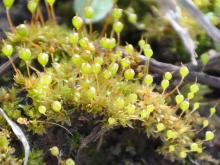
Species Types
Scientific Name
Physcomitrium pyriforme
Description
Urn moss, or goblet moss, is easy to identify in spring: The capsules of this common small moss are green as a gooseberry and are shaped like tiny pears, wide end facing up. Grows in open habitats on disturbed soils.
Media
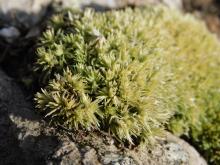
Species Types
Scientific Name
Leucobryum glaucum and Leucobryum albidum
Description
Pincushion mosses, or leucobryum mosses, are whitish green and form pillowlike mounds that may be the size of a pincushion or much larger. Look for them on thin soils of ridges and rock ledges.
Media
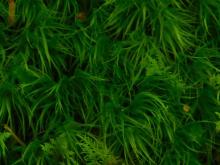
Species Types
Scientific Name
Dicranum spp.
Description
Beautiful components of woodland scenery, our most common broom mosses have glossy, thin, slender-pointed leaves that are quite long and all bend in the same direction, as if being blown by the wind.
See Also
About Mosses, Liverworts, and Lichens in Missouri
Mosses, liverworts, hornworts, and lichens seem rather similar, but these organisms are in very different groups. Mosses, liverworts, and hornworts are small, low plants usually found in damp habitats. Unlike more familiar plants, they lack veinlike structures and do not produce flowers or seeds — instead, they produce spores. Meanwhile, lichens are not plants at all: they are a collection of different fungi that have photosynthetic algae living within their tissues.





















